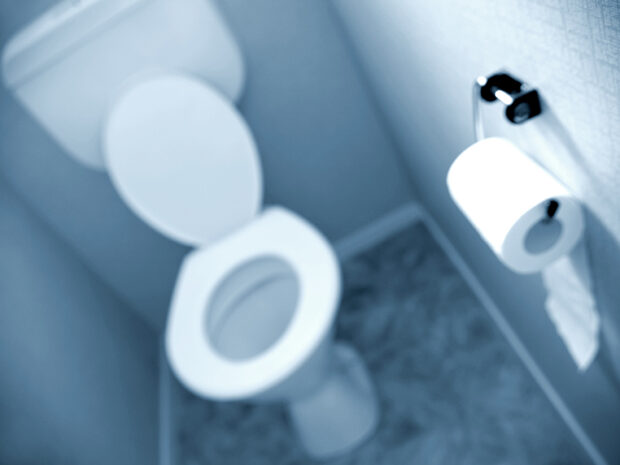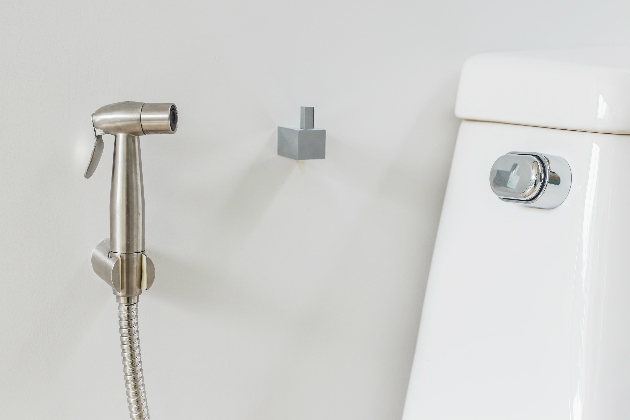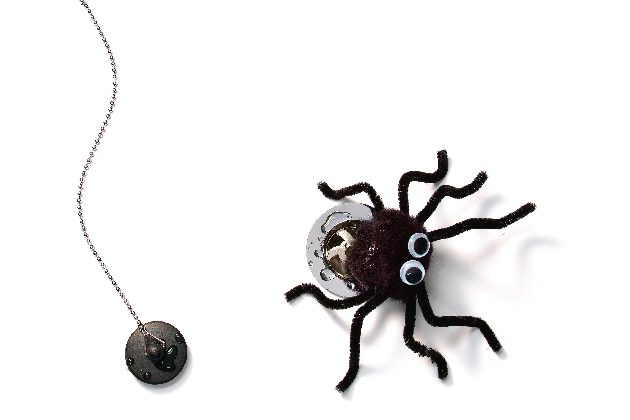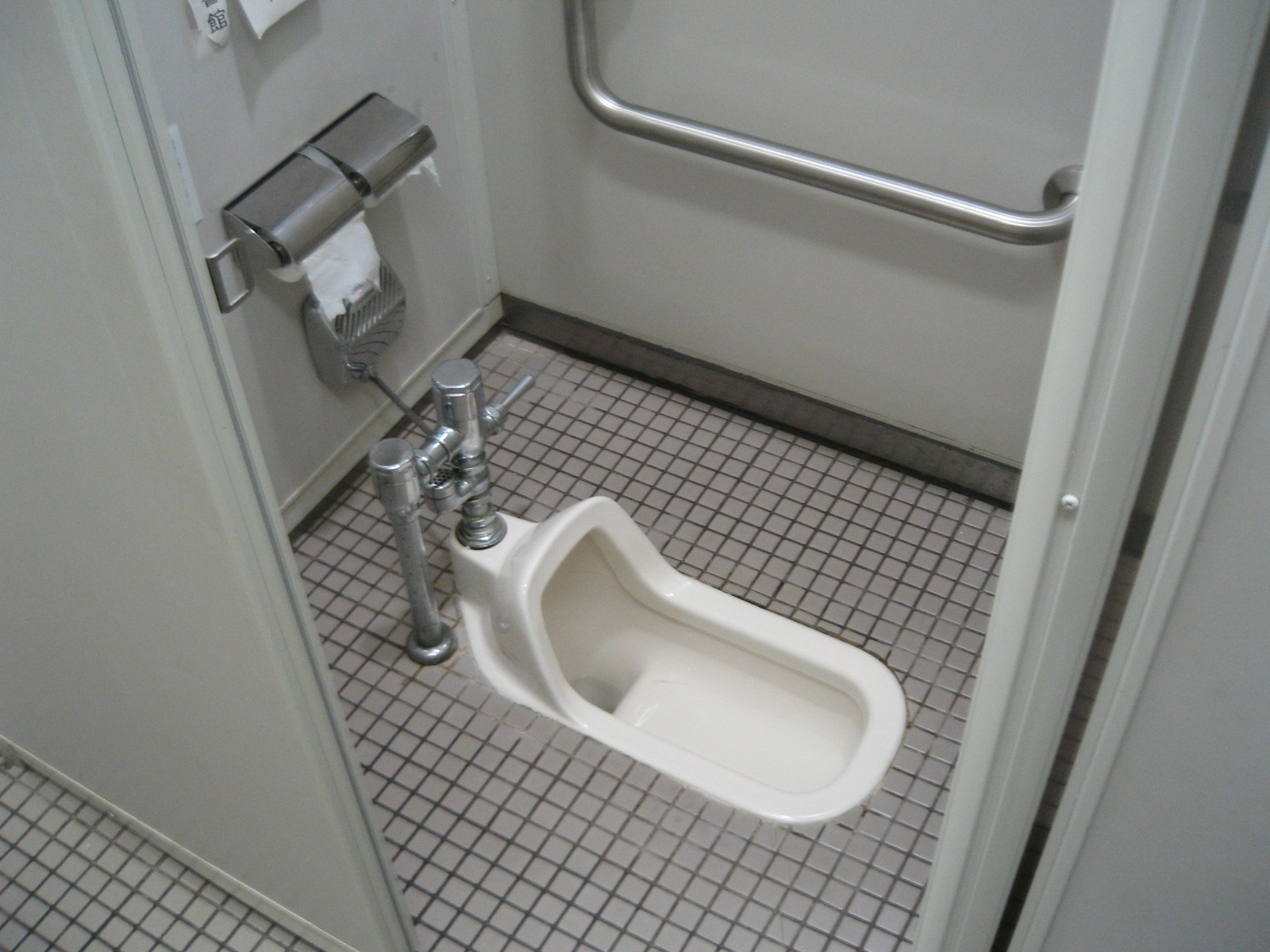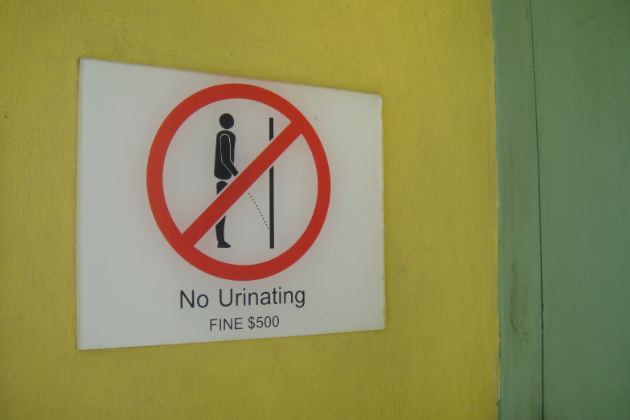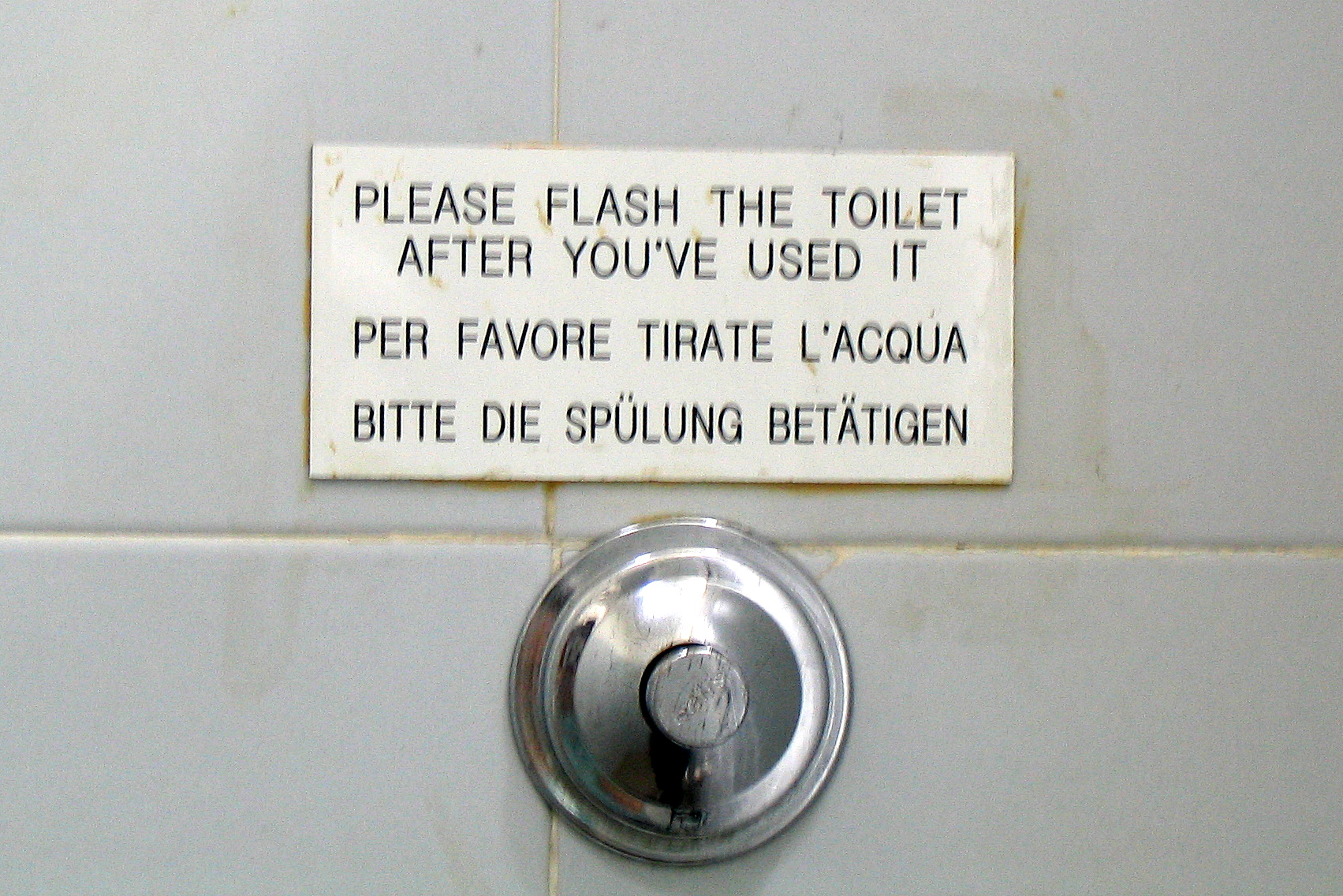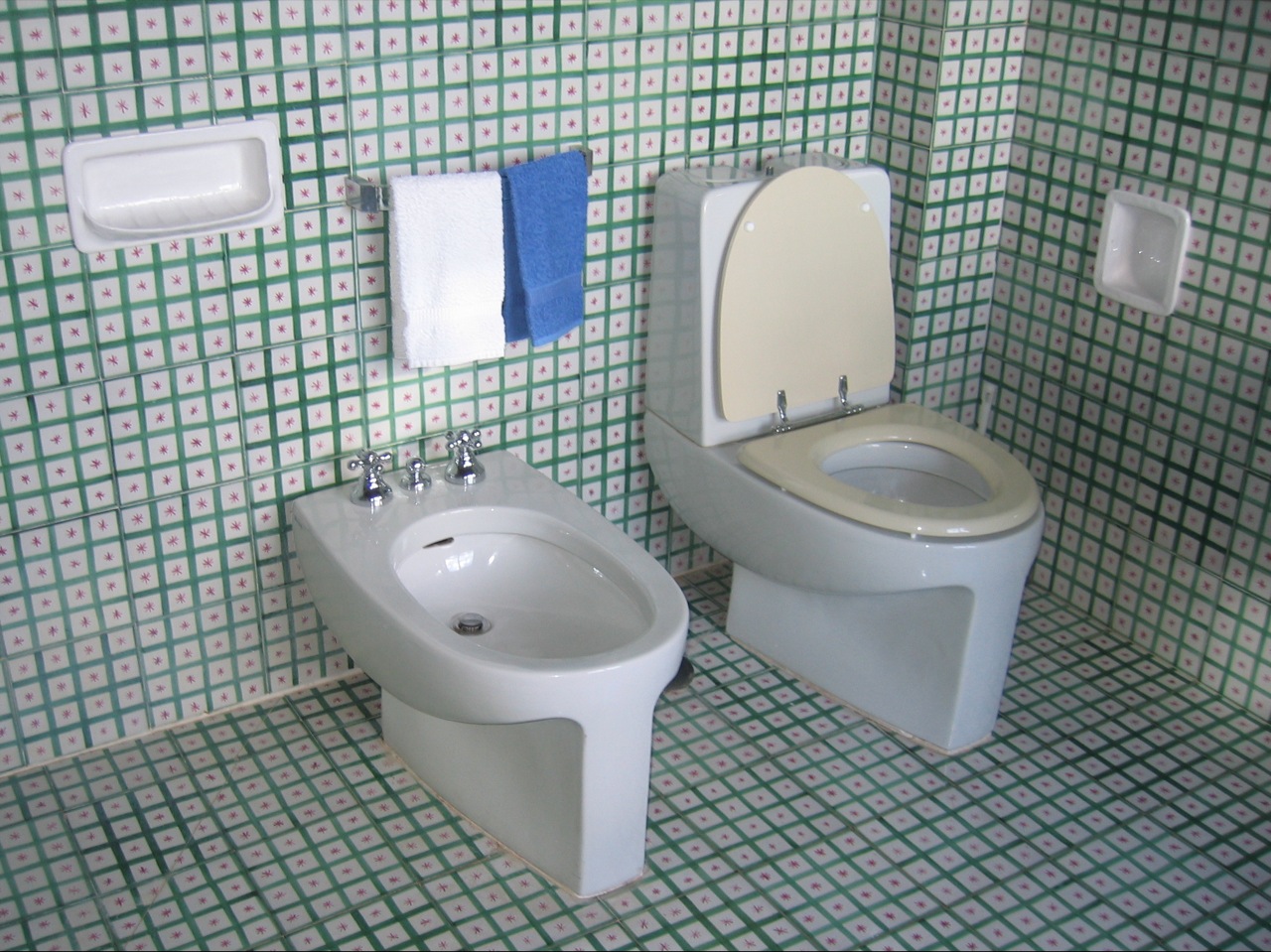As promoted by the United Nations, World Toilet day brings to light around the world important concerns about toilets’ needs and their fragile structures. About 2.5 billion people don’t have access to basic sanitation which has dramatic consequences on health, environment, social and economic development.
Hygiene is a struggle in many places without toilets and below are some interesting differences between toilets from different cultures around the world. You would be surprised about the correlation between social influences and people’s cleaning habits.
We’ve found some of the most interesting toilets from around the world, along with some useful cleaning tips for you. So here we go!
UAE and Middle East – prepare for a good hose down
In some of the Middle East countries, including the UAE, people use a small hose to clean up. You may also find this in Asia and even some parts of Europe. Some of the Muslim world follow the rules of certain hygiene etiquette – called the Qadaa al-Haajah. This includes using water instead of toilet paper, so that’s why bidets and hoses are so popular the region.
Cleaning the bathroom floor (very quickly):
Often a good old hose down just isn’t enough and can actually lead to more issues and a messier bathroom. To get your floor clean faster, sweep the floor first with a dustpan and brush. Use a mixture of cleaning fluid, a quarter cup of vinegar, one tablespoon of dish soap and two gallons of water to mop the floor; make sure to let it dry completely before stepping on it.
Australia – it’s all about breaking the myths
There’s a few myths surround the Australian toilets but we’re going to deduce whether they actually hold any truth. We can debunk the one myth; water does not go counter-clockwise when flushing in the Southern Hemisphere. The Coriolis Effect doesn’t have the same effect on toilets as on hurricanes. Second myth, “terrifying spiders in your toilet” viral videos. When downunder, this is something you SHOULD be concerned about. However, no need panic. Some good toilet habits can help avoid this issue – for one, check the toilet before using it.
Cleaning an Aussie toilet:
Spiders can be your worst nightmare but you’ll be reassured to hear that they don’t often appear in the drains of modern houses. Though they still like to crawl through open windows and under doors so you should still watch out! The best way to avoid them lurking in your toilet is to keep them out of your house altogether (with the help of a few useful tricks). Spiders hate the smell of citrus,so stock up on air fresheners and citronella candles – or, alternatively, use a citrus scented toilet deodorizer.
China, India and other Asian countries – the squat toilets
In Asia, the squat toilet is very popular in countries such as China and India. They can be found in most public bathrooms and even houses. Though it may seem radically different to what some are used to, the squat toilet can actually be better for one’s hygiene. According to medical studies, there is a higher rate of intestinal diseases amongst western toilet users, which could be attributed to the unnatural position that one takes while on the toilet. The squat toilet also prevents transmission of any diseases one would pick up through the transfer of bacteria and lack of sanitation of toilet seats.
Cleaning a squat toilet:
Squat toilets don’t have a toilet seat so are easier to clean. Some of the houses have a shower near the squat so it can being easily cleaned with the help of a brush and some soap – without issue.
Latin American Countries – don’t flush the toilet paper
While in some countries it’s perfectly fine to flush away your toilet paper, you shouldn’t in most Latin American countries. Flushing toilet paper can be risky as it may clog the toilet due to the structure of the pipes. So it’s common to find a bin next to the toilet, where all the paper and other trash is.
Keeping a Latin american bin clean:
Keeping the bin clean is crucial in countries where you cannot flush toilet paper. Most importantly, you NEED a lid – and keep the lid closed to avoid spreading bacteria. Ideally the bin should be emptied daily, to avoid obvious unpleasantries.
Singapore – be careful with the toilet laws
Singapore has a reputation for being the cleanest country in the world. This high standard is kept thanks to its strict laws and the public toilets are no exception. They are well kept and cleanly and there is a fine for any who don’t flush after use! The police know how to catch those forgetful people out and, if so, they are fined up to $150. Urinating in the wrong place can also land you a fine of up to $500.
Sweden – popular unisex public bathrooms
Some foreigners may find unisex bathrooms odd, but a lot of Swedish public bathrooms are now unisex. For the ladies, think of all the men that now have to share your pain in waiting in line for the bathroom!
Keeping the hygiene etiquette in public toilets:
It’s not only worth abiding by the rules of hygiene etiquette out of courtesy for other but also to avoid spreading germs. You shouldn’t use your phone while on the toilet as you’ll be transferring germs via the screen. Remember to wash your hand as you’ve come into contact with lots of areas covered in bacteria – eg. the toilet, door, tap handle…
Italy – several flush options
No one could bet how creative the flushing could be, until you go to Italy and discover several types of flushing methods. As there’s no defined pattern, there’s a flushing button on the wall, a chain that must be pulled, a foot pedal flush, the sensor autoflush or even a hidden lever behind the toilet seat….just to make it that much more of a challenge.
How to avoid spreading germs when flushing:
Studies have shown that flushing a toilet sends fecal particles into the air that can settle on surrounding surfaces up to 10 metres away (e.g. your toothbrush)! The best way to avoid that is to always close the lid before flushing. Even if you remember to close the toilet lid, it’s still safer not to leave your toothbrush lying in the open air. You should also consider changing it once a month.
Europe and Latin America – the bidet thing
The lack of space in modern houses is making bidets more unpopular, however they are still found in many residences around the world, especially in parts of Europe and Latin America. The bidet is typically a ceramic bowl shaped similar to a toilet and in Japan it’s already attached to the toilet (being the advanced nation they are). However, it is not very popular in english speaking countries. Some believe that the British used to associate bidets with French brothels and so avoided it. Despite it’s lack of popularity, some consider using bidets more hygienic than using toilet paper, especially in the case of women.
Keeping a hygienic bidet
Bidets must be constantly kept clean, especially ceramic ones. Similar to cleaning a toilet, first clean the bowl using a cleaning agent, scrubbing and washing. Then clean the rest of it with disinfectant spray even the parts that do not appear dirty. Don’t forget to wipe the tap handle which can be a prime transmitter of germs as everyone will use it.
Germany, Austria and the Netherlands – the inspection shelf toilet
German, Austrian and Dutch toilets are more interesting than you might think. Some of them have a near horizontal surface, similar to a shelf, where one’s number 2 is held before flushing. Though it may be strange to foreigners, it reveals the practical and rational culture prevalent in these countries. One can easily check if their diet is lacking something (though some may find it more pleasant to use alternative ways of monitoring their health) or check for other abnormalities.
Cleaning a shelf toilet:
Your toilet brush is a deadly weapon to keep this kind of toilet bowl clean and free of bacteria. You should try to clean your brush at least once a month. Fill a bucket with hot water and bleach and leave the brush in it for an hour before rinsing it under hot water. When it’s dry the brush should be bacteria free.
What category do you fall under? What are your country’s funny toilet habits?
If you’re looking to hire a part-time maid for your home, why not visit the Helpling UAE website, to read more our competitively priced maid services?




